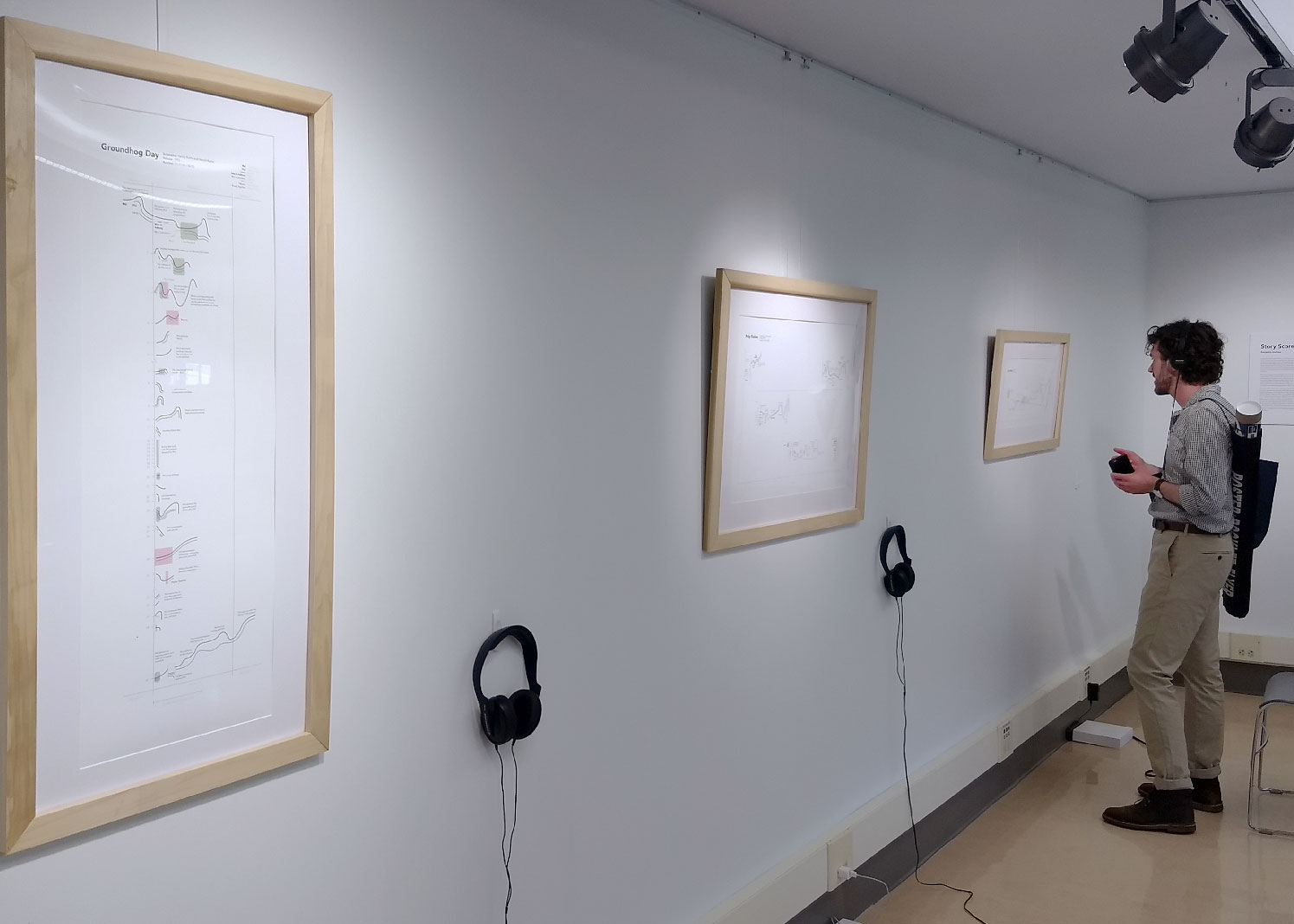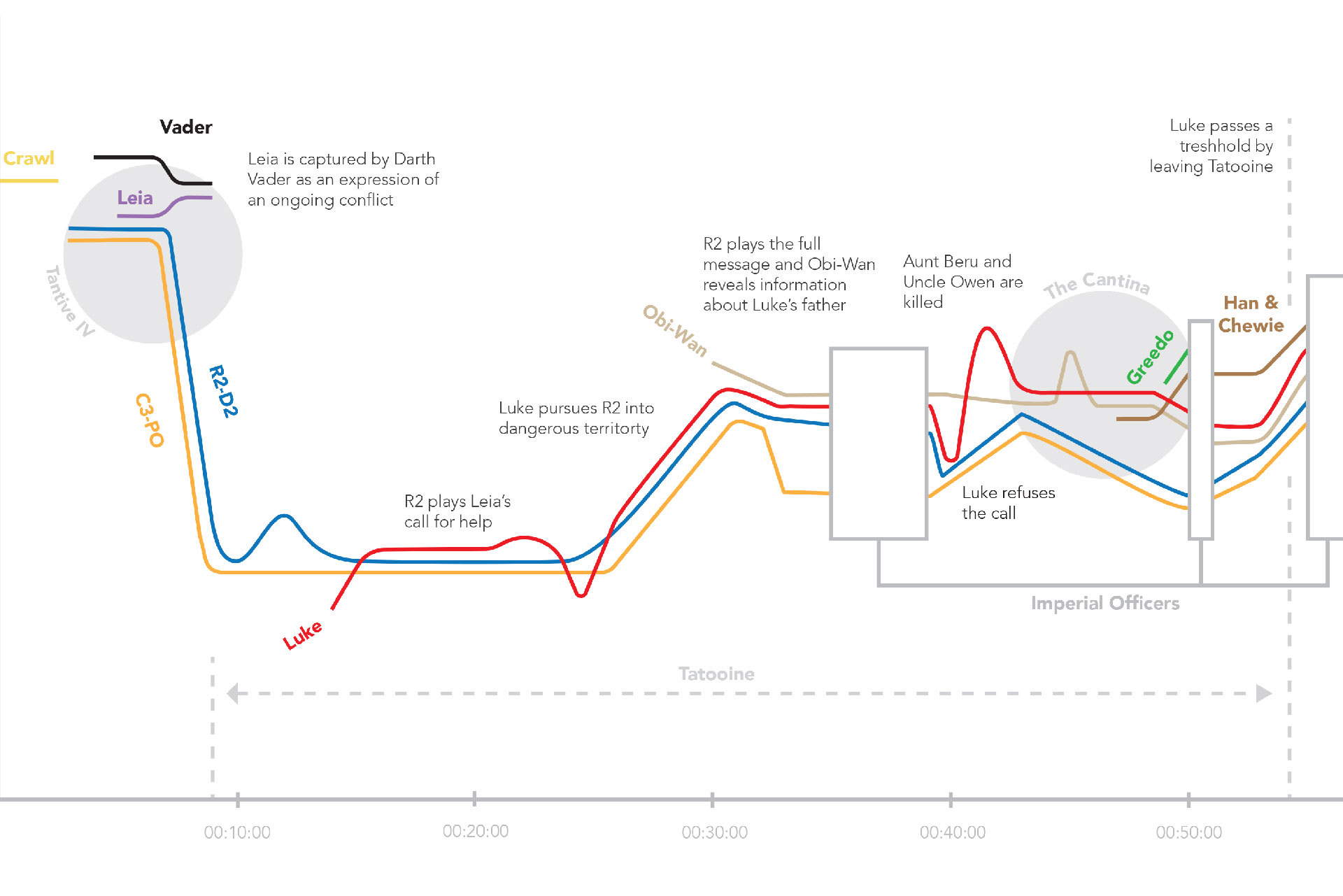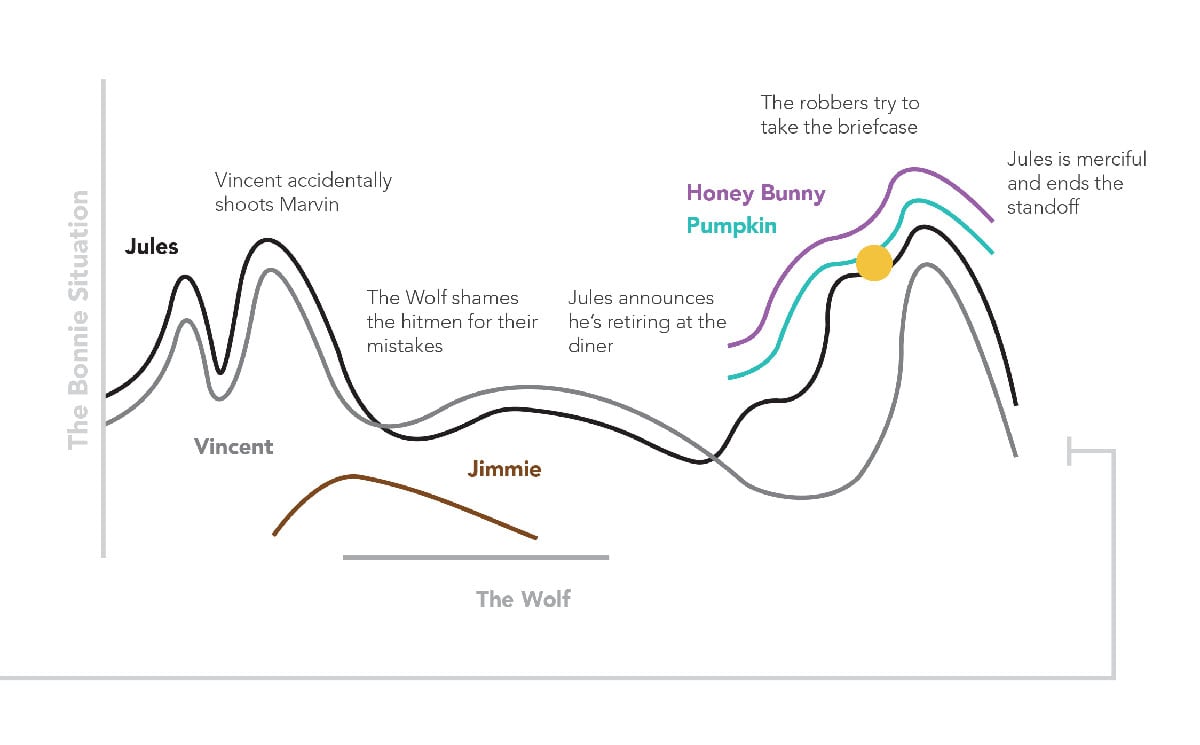

Star Wars View full hi-res image
Music is immediate and improvisatory, full of emotion and never performed the same way twice. The other ancient art—storytelling—seems to be a more calculating affair, arising from a lone writer’s desk. But both music and fiction translate written instructions into an experience. When reading a novel the transformation occurs in the imagination; in filmmaking, the written script is translated into cinema before it reaches its final audience.
What would happen if the translations of music and fiction crossed wires? To find out, the plots of three popular films were dissected minute-by-minute, and represented as original story maps. These drawings are reminiscent of the graphic notation used by composers like John Cage, Cornelius Cardew, Brian Eno, or Robert Moran, but they are also related to methods a screenwriter might use to outline a story.

Pulp Fiction View full hi-res image
This informal technique varies according to each film’s structure, representing characters with individual lines that are graphed according to time and rising tension (for the audience and/or character). After each film was translated into a graphic score, the lines representing each character were converted into a series of SVG coordinates, which were then used as MIDI notes to produce a musical composition. The instruments and sounds were inspired by the tones and textures of each film, though no samples or melodies were directly taken from the films themselves. The resulting compositions are not scores to be inserted into the films, but examples of story translated into music; the shape of each film’s structure repurposed to a new medium.
This project was developed for the 2017 conference of the International Community of Auditory Display
Read more about the process in my documentation on turning SVG images into MIDI.
Groundhog Day
